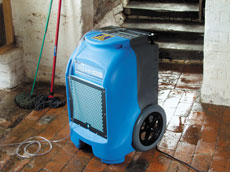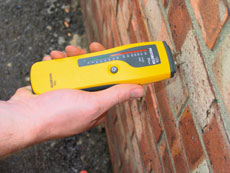-
Tool Hire
Access & Powered Access Breaking & Drilling Building & Siteworks Carpet Cleaners Cleaning & Floorcare Concreting & Preparation Cooling, Heating, Drying Event Fixing Tools Gardening Ladders Lifting & Handling Lighting & Power Painting & Decorating Plumbing & Pumping Powered Access Safety & Ventilation Sanders Sawing & Cutting Skip Hire Surveying & Location Welding Hilti Products
- Find a Branch
- Tips & Advice
- FAQ
- Contact Us
Home How to prevent, monitor, and treat damp
There are several measures that will treat and remedy damp, so it is definitely worth examining your property throughout before continuing with the treatment process.
Treating Rising Damp
This damp usually affects the bottom of a wall at ground level. The most common defects that lead to rising damp are a lack of an effective physical damp proof course in the wall or floor. The most likely reasons for such defects are down to possibility the building was built without one, or the existing damp proof course has broken down, been damaged or has been covered over by wall finishes solid floors, soil or pathways. On the occasions a perfectly good physical damp proof course has been ‘bridged’ by earth from the garden or raised pathways, often the this can be fixed by digging away all the soil or reducing the level allowing the physical damp course to work.
If a simple building repair procedure does not cure the problem sufficiently and do not correct the problems the installation of a new damp course should be considered.
Overcoming Penetrating Damp
This form of damp tends to occur when water gets in from the outside, therefore it is important the first step is to check everything in and around the property. Check gutters, downpipes, flashing, rendering and window frames in detail. Always ensure downpipes are unobstructed, and if the guttering has seen better days, think about repairing or replacing it. Check the rendering to see if its cracked, ensure pointing is in good condition and no cracks are visible. Ensure windows and doors sealing and gaps around the glazing or frames. It is important to check underneath window sills as there should be a dip groove to shed any rain water and prevent it running down the house wall. Should the dip grooves be blocked with any moss, dirt or cement, make sure it is clear thoroughly. If they have weathered away, have them reformed.
You may want to consider an exterior waterproofing fluid as it can be useful if exterior brickwork has become porous. It acts as a water-resistant skin and only needs to be painted on when the brickwork is completely dry and should also reduce heat loss inside the house, as dry walls give much better insulation compared to wet ones.
Preventing condensation
This can be a real nuisance and when condensation persists, a specialist surveyor should be engaged to explore the cause of the problem and provide advice and possible solutions.
Heating the air around the condensation area is unlikely to be a satisfactory solution, in both an economic and practical sense. Unless cold surfaces are prevented, condensation is almost inevitable. Any preventive action therefore must involve a lowering of moisture levels and the elimination of cold surfaces. Better heating and ventilation coupled with specific action in relation to cold spots will usually result in a significant improvement in conditions. Constant background heat is preferable to intermittent heating since this will help to maintain a higher ambient temperature in the fabric of the building. A small extractor fan in a kitchen or bathroom will help carry moisture-laden air from the two areas most responsible for condensation with minimal running costs. This process is now required by the building regulations in all new constructions. Whenever a open fire or fixed gas exists, a certain amount of ‘natural’ ventilation will occur and where additional ventilation is provided it is important that it is not blocked off. An alternative to heating and ventilation for the control of moisture in the air is a dehumidifier, which draws in air, cools it to remove moisture which is collected and re-heats it to an acceptable temperature before re-circulating it.





